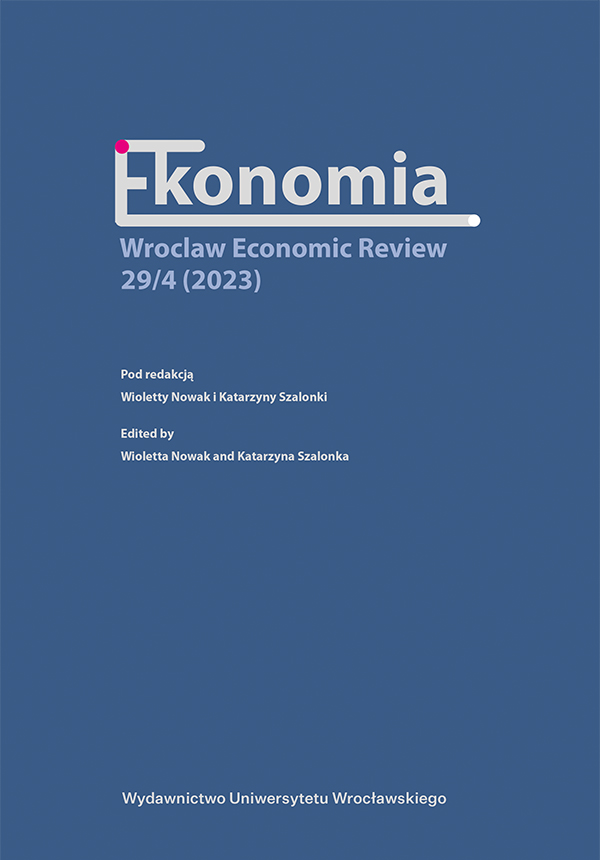

Articles

Objectives: The objective of our paper was to determine the statistical significance of the impact of the COVID-19 disease on the average age of death of an individual and the dependence of the average age of death on the causes of death in 2020.
Study design: Awareness of the effects and consequences of the pandemic prompted us to check whether COVID-19 had a statistically significant impact on death patterns in Czechia, Poland, and Slovakia.
Methods: The research is based on a detailed comparative analysis of the age structure of deaths from COVID-19 in countries that are regionally and culturally close. The Renkonen similarity index is calculated, followed by the non-parametric test for similarity of structures.
Results: The average life expectancy in the analyzed countries decreased by about 1–2 years, and the forecasts of the increase in the number of deaths in 2020 turned out to be underestimated by 11% in the case of Slovakia and by 15% in the case of Poland and Czechia. COVID-19 was the fourth leading cause of death for women and the third leading cause of death for men in Poland and Czechia. In Slovakia, it was the third leading cause of death among women and the fourth among men.
Conclusions: The pandemic caused not only direct deaths from the virus, but also indirect deaths due to the disruption of healthcare systems, socioeconomic shocks, and mental health consequences.
Aburto, J.M., Schöley, J., Kashnitsky, I., Zhang, L., Rahal, Ch., Missov, T., Mills, M., Dowd J., Kashyap R. (2022). Quantifying impacts of the COVID-19 pandemic through life-expectancylosses: A population-level study of 29 countries. International Journal of Epidemiology, 51(1), 63–74. https://doi.org/10.1093/ije/dyab207.
Azomahou, T.T., Boucekkine, R., Diene, B. (2009). A closer look at the relationship between life expectancy and economic growth. International Journal of Economic Theory, 5(2), 201–244. https://doi.org/10.1111/j.1742-7363.2009.00105.x.
Bhaskaran, K., Bacon, S., Evans, S.J., Bates, C.J., Rentsch, C.T., MacKenna, B., Tomlinson, L., Walker, A.J., Schultze, A., Morton, C.E., Grint, D., Mehrkar, A., Eggo, R.M., Inglesby, P., Douglas, I.J., McDonald, H.I., Cockburn, J., Williamson, E.J., Evans, D., Curtis, H.J., Hulme, W.J., Parry, J., Hester, F., Harper, S., Spiegelhalter, D., Smeeth, L., Goldacre, B. (2021). Factors associated with deaths due to COVID-19 versus other causes: Population-based cohort analysis of UK primary care data and linked national death registrations within the Open SAFELY platform. The Lancet Regional Health — Europe, 6(2021), 100109. https://doi.org/10.1016/j.lanepe.2021.10010.
Cervellati, M., Sunde, U. (2011). Life expectancy and economic growth: The role of the demographic transition. Journal of Economic Growth, 16(2), 99–133. https://doi.org/10.1007/s10887-011-9065-2.
Dash, A., Grimshaw, D. (1993). Dread disease cover — an actuarial perspective. Journal of Staple Inn. Actuarial Society, 33,149–193. Retrieved September 5, 2022, from https://www.actuaries.org.uk/system/files/documents/pdf/0149-0193.pdf.
European Commission. (2020, June 17). European Commission Adopted Report on the Impact of Demographic Change in Europe. Retrieved August 17, 2022, from https:/www./ec.europa.eu/commission/presscorner/detail/en/ip_20_1056.
Garcia, J., Torres, C., Barbieri, M., Camarda, C.G., Cambois, E., Caporali, A., Meslé, F., Poniakina, S., Robine, J.M. (2021). Differences in COVID-19 mortality: Implications of imperfect and diverse data collection systems. Population, 76(1), 35–72. https://doi.org/10.3917/popu.2101.0035.
Glance, L.G., Dick, A.W., Shippey, E., McCormick, P.J., Dutton, R., Stone, P.W., Shang, J., Lustik, S.J., Lander, H.L., Gosev, I., Joynt Maddox, K.E. (2022). Association between the COVID-19 pandemic and insurance-based disparities in mortality after major surgery among US adults. JAMA Network Open, 5(7), e2222360. Retrieved September 2, 2022, from https://www.jamanetwork.com/journals/jamanetworkopen/fullarticle/2794297.
GUS. (2022). Główny Urząd Statystyczny. Retrieved September 15, 2022, from https://www.stat.gov.pl/en/.
Haberman, S. (1983a). Decrement tables and the measurement of morbidity: I. Journal of the Institute of Actuaries, 110(2), 361–381. https://doi:10.1017/S0020268100041391.
Haberman, S. (1983b). Decrement tables and the measurement of morbidity: II. Journal of the Institute of Actuaries, 111(1), 73–86. https://doi:10.1017/S002026810004155X.
Haberman, S., Pitacco, E. (1999). Actuarial Models for Disability Insurance. Boca Raton: Chapman & Hall.
Hiam, L., Dorling, D., McKee, M. (2020). When experts disagree: Interviews with public health experts on health outcomes in the UK 2010–2020. Public Health, 96–105. https://doi.org/10.1016/j.puhe.2022.10.019.
International Statistical Classification of Diseases and Related Health Problems. 10th Revision. (2019). Retrieved November 29, 2022, from https://www.icd.who.int/browse10/2019/en.
Jacobson, S.H., Jokela, J.A. (2020). Non-COVID-19 excess deaths by age and gender in the United States during the first three months of the COVID-19 pandemic. Public Health, 189, 101–103. https://doi.org/10.1016/j.puhe.2020.10.004.
Ministry of Health of the Czech Republic. (n.d.). Retrieved September 10, 2022, from https://www.mzcr.cz/.
Ministry of Health of the Slovak Republic. (n.d.). Retrieved September 10, 2022, from https://www.health.gov.sk/.
Pitacco, E. (2014). Health Insurance. Basic Actuarial Models. EAA series. New York: Springer.
Pitacco, E. (1994). LTC insurance. From the multistate model to practical implementations. In Proceedings of the XXV ASTIN Colloquium, Cannes, France, 437–452.
Renkonen, O. (1938). Statisch-ökologische Untersuchungen über die terrestrische Käferwelt der finnischen Bruchmoore. Societas zoologica-botanica Fennica Vanamo.
Sokołowski, A. (1993). Propozycja testu podobieństwa struktur. Przegląd Statystyczny, 40(3–4), 295–301.
Statistical Office of the Slovak Republic (2022). Deaths by Causes of Death Age and Sex — SR-Reg-District. Retrieved October 11, 2022, from http://www.datacube.statistics.sk/#!/view/sk/vbd_dem/om7036rr/v_om7036rr_00_00_00_en.
Torres, C., García, J., Meslé, F., Barbieri, M., Bonnet, F., Camarda, C.G., Cambois, E., Caparali, A., Couppié, É., Poniakina, S., Robine, J.M. (2023). Identifying age-and sex-specific COVID-19 mortality trends over time in six countries. International Journal of Infectious Diseases, 128, 32–40. https://doi.org/10.1016/j.ijid.2022.12.004.
Toubiana, L., Mucchielli, L., Bouaud, J., Chaillot, P. (2023). What the analysis of causes of death in France in 2020 reveals about the impact of the COVID-19 epidemic. MedRxiv, 1–14. https://doi.org/10.1101/2023.03.07.23286673.
Tsang, T.K., Wu, P., Lin, Y., Lau, E.H.Y., Leung, G.M., Cowling, B.J. (2020). Effect of changing case definitions for COVID-19 on the epidemic curve and transmission parameters in mainland China: A modelling study. The Lancet Public Health, 5(5), e289–e296. https://doi.org/10.1016/S2468-2667(20)30089-X.
WHO. (2020, April 20). International Guidelines for Certification and Classification (Coding) of COVID-19 as Cause of Death. World Health Organization. Retrieved September 30, 2022, from https://www.who.int/publications/m/item/international-guidelines-for-certification-and-classification-(coding)-of-COVID-19-as-cause-of-death.
Wolda, H. (1981). Similarity indices, sample size and diversity. Oecologia, 50(3), 296–302.